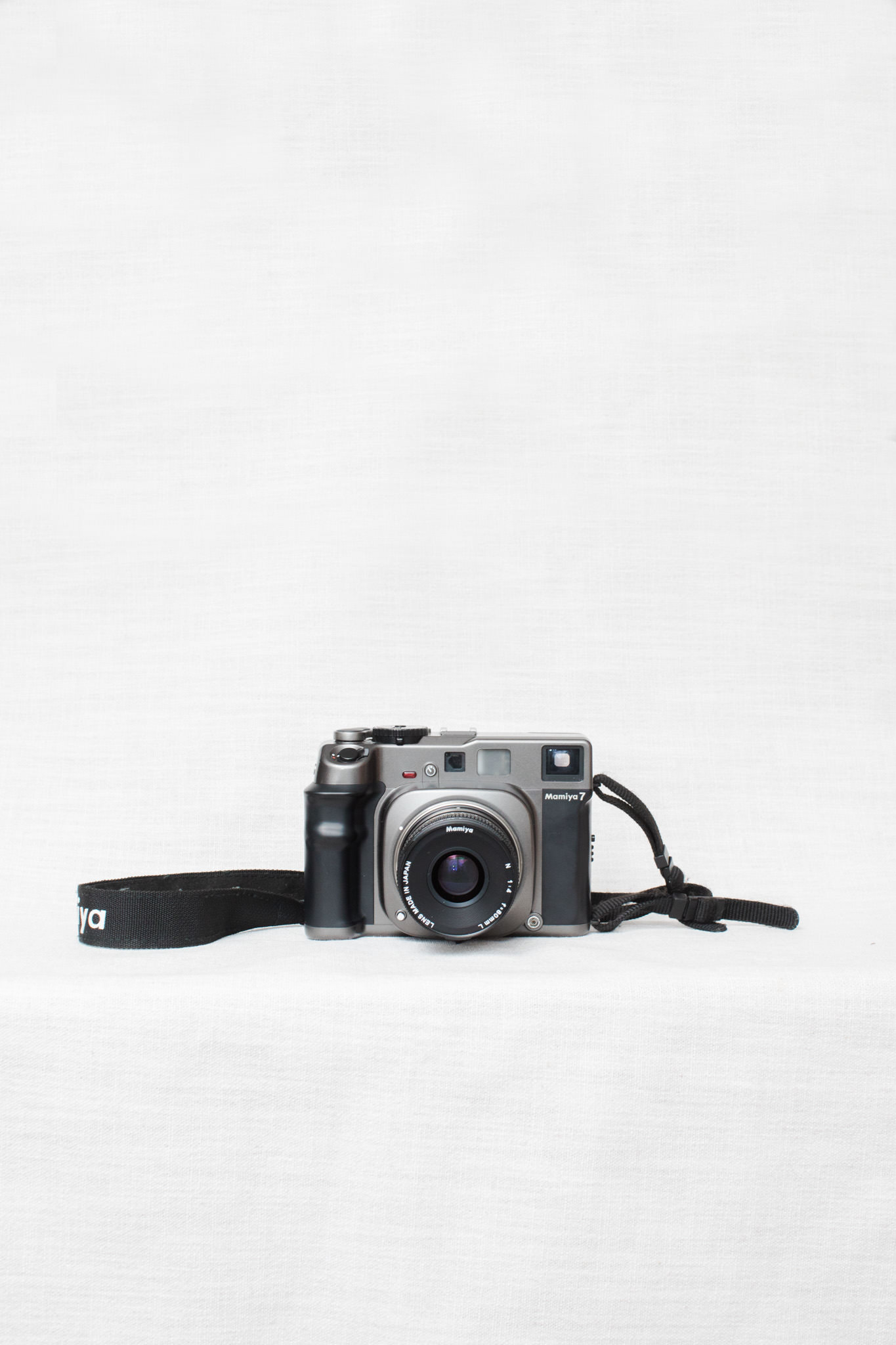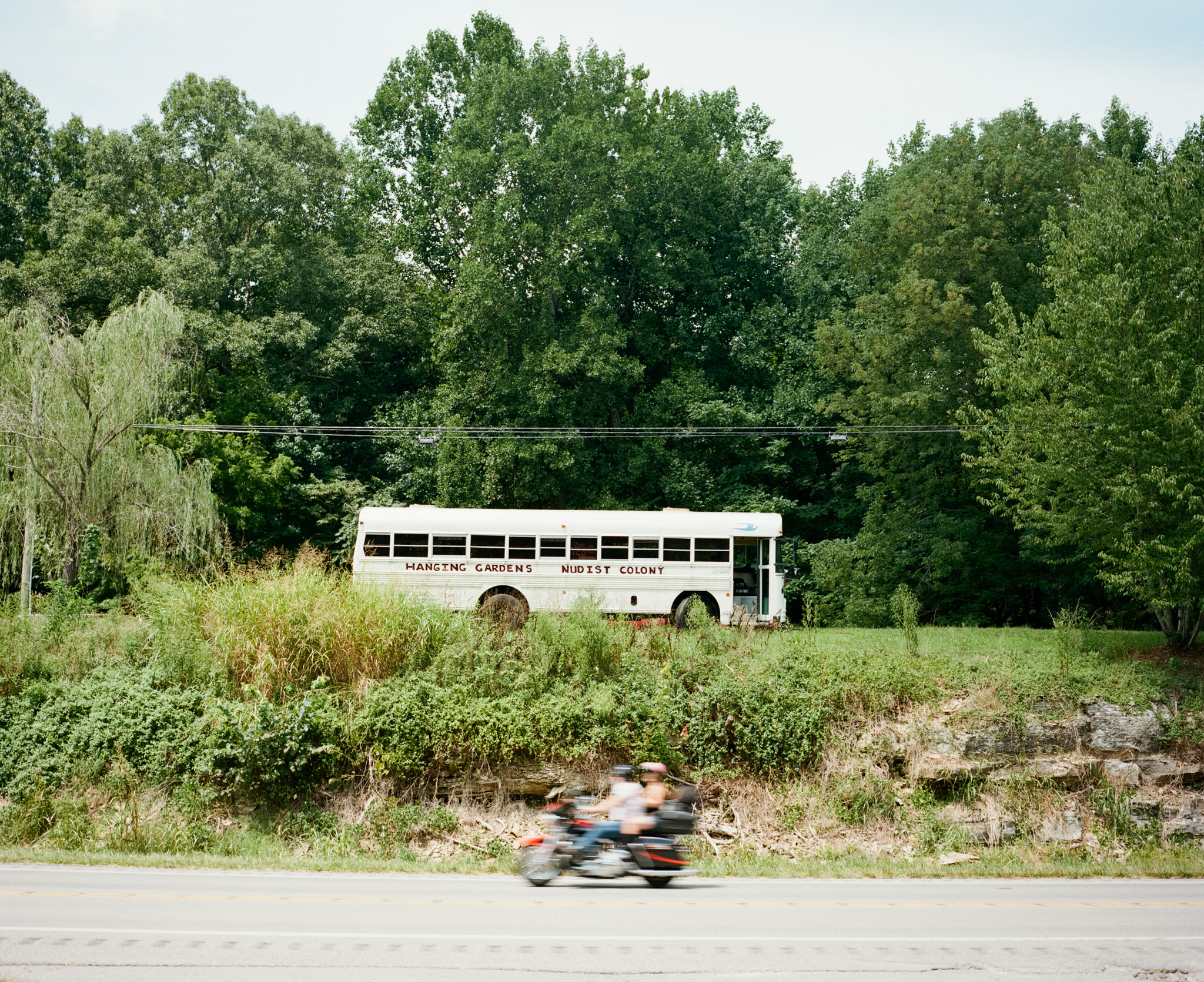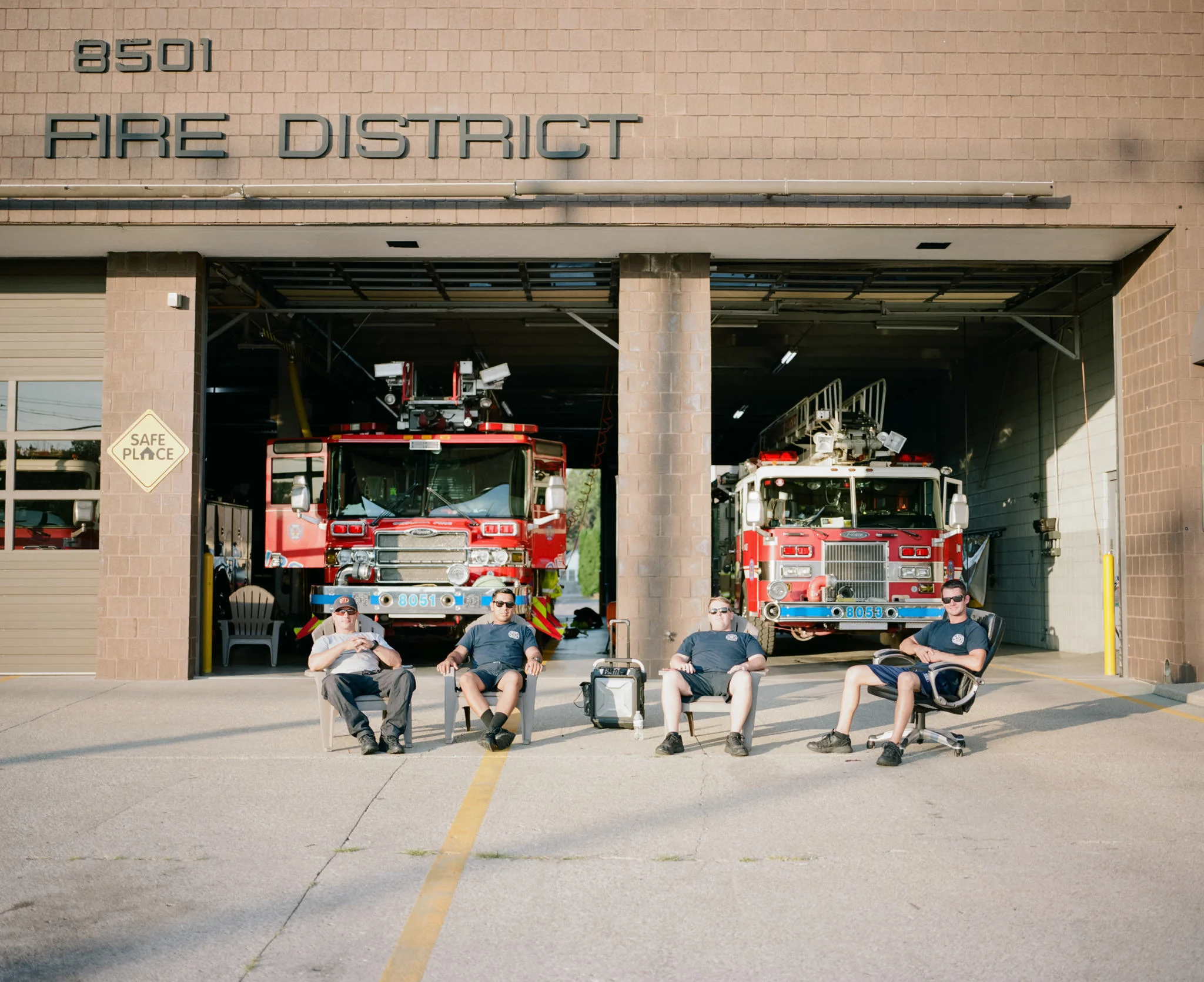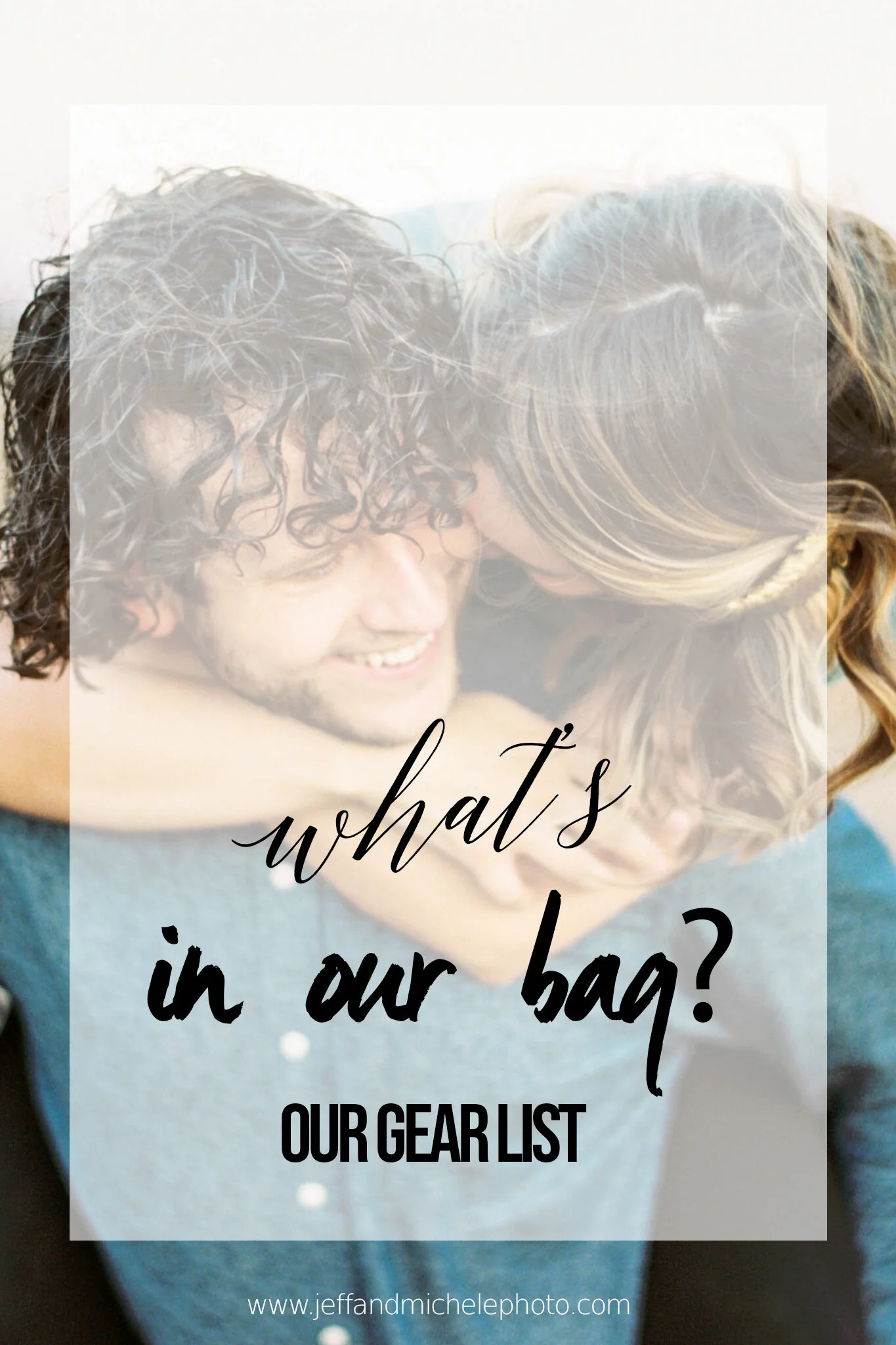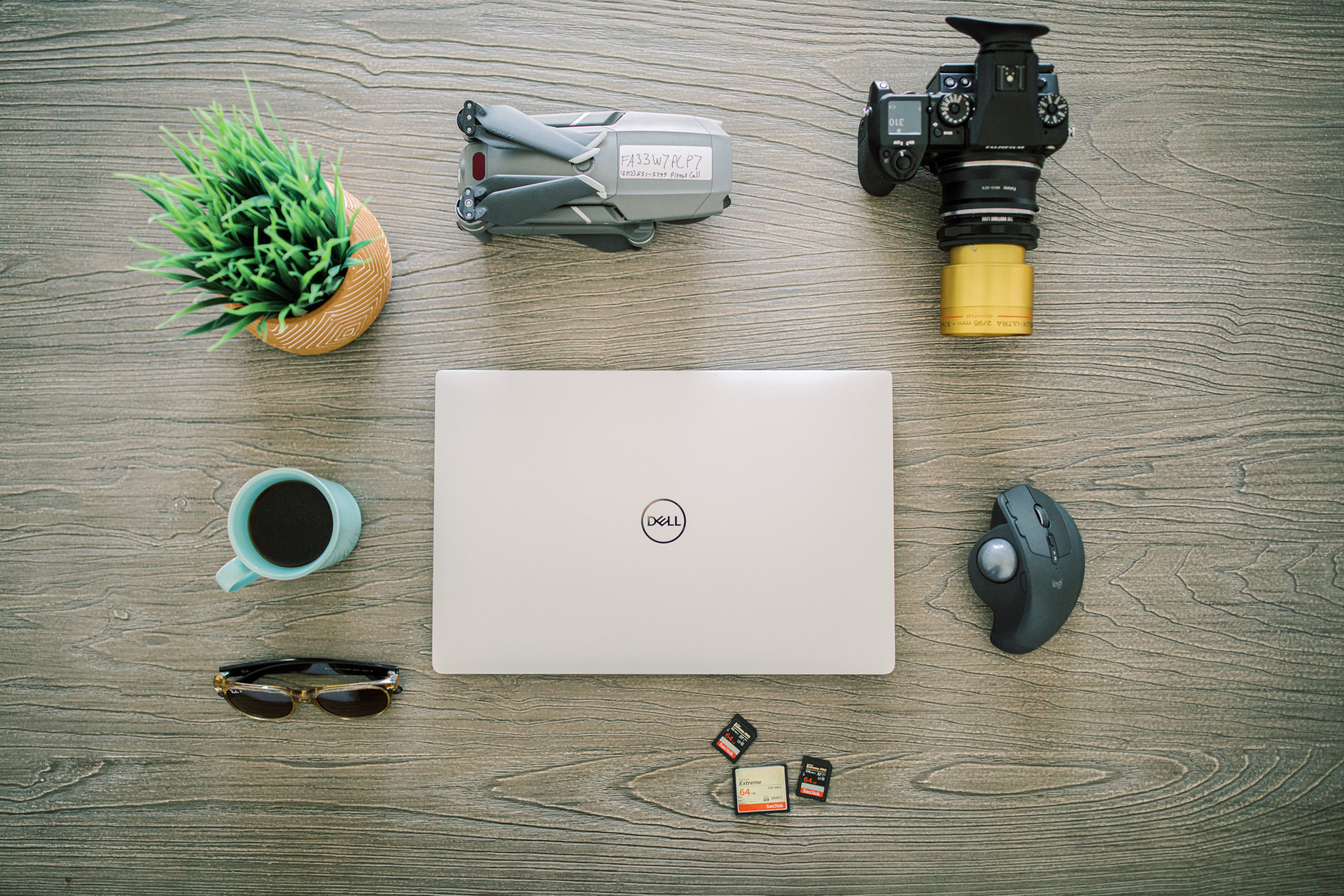Image of Mamiya 7 with 80mm Lens
Note: This post is part of our "Learn Blog" for photographers. For workshops, coaching, and other resources designed to help grow your skills as a photographer click here (after you read the article, of course)! To be transparent, all links are paid advertising, as a portion of any purchase made while using these links is credited to us. Please, consider using our links to help support what we do! Thank you!
Image of white bus with Hanging Gardens Nudist Colony written on side, taken with the Mamiya 7 and 80mm f/4 lens
The Mamiya 7 is a medium format 6x7 negative rangefinder camera with an excellent little lineup of lenses (43mm f/4.5, 50mm f/4.5, 65mm f/4, 80mm f/4, 150 f/4.5, and the 210mm f/8). It's known as a sort of legend for travel landscape photography and is unique in that it's medium format, lightweight, and a rangefinder.
I recently stumbled upon one for a good price in a local camera shop, so I decided to pull the trigger and give it a go! Now that I've had some time with it, I'll give my Mamiya 7 Review.
In my Mamiya 7 Review I'll go over the following:
Basic features of the Mamiya 7
What I love about the Mamiya 7
Some things that might be an issue for using the Mamiya 7
A look at several other options such as the Mamiya 6 vs Mamiya 7, Plaubel Makina vs Mamiya 7, Pentax 67 vs Mamiya 7, and Mamiya 7ii vs Mamiya 7
Image taken with Mamiya 7 Film Camera
Features of the Mamiya 7
A fantastic feature of the Mamiya 7 is that it's built as a leaf-shutter camera; there is no shutter in the body, but instead in the lenses. This means no loud mirror slap when you hit the shutter button and no shake from the mirror. So, shooting slower shutter speeds is going to be a bit easier compared to some other medium format SLR options.
One of the other cool features of the Mamiya 7 is the meter in the viewfinder. Now, I am a handheld meter guy. I love my Sekonic L-358. With that said, I've enjoyed the ease of using the Mamiya 7's in-camera meter when on the go. And what's more, it seems to be pretty accurate!
The Mamiya 7's meter blinks the correct shutter speed to expose at EV 0, until you choose that speed. You can use exposure compensation to shift the meter higher or lower. I find that pointing the camera at the shadows, moving the shutter dial to the correct speed, and then snapping a shot of my subject is an easy way to grab a well-exposed shot on-the-fly.
Image of Mamiya 7 Film Camera with 80mm lens
Another feature is the self-timer. To activate, you simply push the self-timer button at the top front of the camera and it'll give you a 10-second option until it fires. This is nice if you're using a tripod for self-portraits, or even shooting landscapes at long shutter speeds when you're wanting to completely avoid any shake created by pressing the shutter button.
The viewfinder of the Mamiya 7 is fairly big and bright. The focus window is excellent is various lighting conditions, which was one of my complaints with the Leica m2. But, oddly enough, I don't consider it as bright as my m2's viewfinder. Still, it does a fine job of allowing for a good user experience.
Image of baby blue antique car taken with the Mamiya 7 and 80mm f/4 lens
Feel in the Hand and User Experience of the Mamiya 7
The Mamiya 7 feels good in the hand. It's ergonomic, very lightweight for a 6x7, and doesn't feel too burdensome to bring along on a day-trip. In terms of a grab-and-go camera, I'd feel just as comfortable grabbing the Mamiya 7 as I would grabbing a Canon 5div with a 50mm 1.2L.
As far as a walk-about, this camera will get still get looks. I've noticed that when using my Leica m2, I can be in "stealth mode"...well, at least mostly. The m2 doesn't raise too many eyebrows when I pull it up.
Not so with the Mamiya 7. I'm a person that is very sensitive to "feeling eyeballs" on me, and with the Mamiya 7, I "feel eyeballs". Now, this is not a big deal except perhaps when it comes to candids. But, I don’t want to overplay this issue.
Overall, the Mamiya 7 is one of those cameras that just feels good to use, though large.
Image of a boy on the beach of Barren River Lake taken with the Mamiya 7 and 80mm f/4 lens
The [Could Be] Bad and the Ugly [For You]
The biggest drawback to this system is in relation to its usage for low-light portraits. At its largest for any lens, you'll be getting an aperture of f/4. In my experience, I found that this makes it tough to get well-exposed portraits in dimly lit areas involving moving subject.
Also, this means that you don't have the power to create intense bokeh like you can with some of the other medium format camera/lens combos like the Contax 80mm f/2 or Pentax 67 105mm f/2.4.
But, that doesn't mean that you can't create awesome portraits with the Mamiya 7! It's great for well-lit situations, and you'll still be getting some good fall-off, especially with the 150mm. Plus, the Mamiya 7 lenses are quite sharp and have plenty of contrast to pop!
Compared to my m2, the Mamiya 7 is large, but so is it's negative. And, compared to many other medium format film options, the Mamiya 7 is highly ergonomic and transportable.
Another big drawback to getting into a Mamiya 7 setup is its price. As of this month (7/2018), you're looking to invest anywhere from $1,600-$2,500 for a body with a lens.
Image of Kentucky Firemen taken with the Mamiya 7 and 80mm f/4 lens
Mamiya 7 vs Plaubel Makina vs Mamiya 6 vs the Pentax 67
The most similar options to the Mamiya 7 would be the Mamiya 6 or the Plaubel Makina, while I'll also mention the Pentax 67 since it's a very popular option with many.
The Plaubel Makina is a fixed-lens, 6x7 camera that features a Nikon 80mm f/2.8. It is a double-stroke camera requiring two strokes on the film advance lever before you can fire the next frame.
This camera does have the advantage of getting a full stop more of light, as well as the reduced depth of field that's typically desirable for portraits. So, if portraits on-the-go is your main concern, then I'd recommend the Plaubel Makina 67 over the Mamiya 7.
If you're less concerned with low-light and shallow depth of field, the Mamiya 7 has a lot more to offer with its interchangeable lenses and single-stroke design. Both cameras offer wonderful sharpness and contrast, so the biggest thing to consider is your low-light needs and depth of field desires.
The Mamiya 6 is very similar in terms of it being a medium format, leaf-shutter camera, with a few differences worthy of mention 1) It's 6x6 instead of 6x7 and 2) it doesn't have as wide angle options as the Mamiya 7, and 3) it has the ability to retract the lenses into the body.
In terms of choosing between the Mamiya 6 vs the Mamiya 7, you might want to consider if you like/want square photos, want/need wider options, and lastly, if you want something that's perhaps a little more manageable in terms of size. If you're fine with square photos, don't need anything wider than a 50mm on 6x6, and prefer something lighter/more compact, then the Mamiya 6 may be the best option for you.
The Pentax 67 and the various versions of this camera has a lineup of amazing lenses at various focal lengths, including the legendary 105mm f/2.4. In terms of a travel-friendly camera, the bulky and heavy Pentax 67 is definitely overshadowed by the other options mentioned here, including the Mamiya 7.
The Mamiya 7 cannot touch the versatility of lens options offered with the Pentax 67. The Pentax 67 does have leaf shutter options, though it is a SLR and not a rangefinder. If you're not concerned with traveling very light, then the Pentax 67 is going to win against all the other options in terms of low-light, shallow depth of field, and lens variety.
Image of Paradise Point Marketplace taken with the Mamiya 7 and 80mm f/4 lens
Mamiya 7 vs Mamiya 7ii
At the time of writing, the Mamiya 7ii costs around $1,000 more than the early version Mamiya 7. The most notable upgrades of the Mamiya 7ii include a double-exposure feature and a polarized rangefinder offering slight contrast improvement. Other than these upgrades, the Mamiya 7 and Mamiya 7ii cameras are essentially the same.
Final Thoughts on the Mamiya 7
This camera does not disappoint. It's a true classic and produces images of great quality. Thought a little pricey, it's a camera that holds its value well in terms of features, image quality, and, since it's likely to continue going up in price, resell value.
Thanks again for taking the time to read my Mamiya 7 review!
If you're interested in purchasing a Mamiya 7 or Mamiya 7ii, please consider clicking here to use our link, as we get a portion of the total purchase price. This helps fund us to do more of these articles! Thank you!

